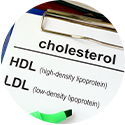If you suffer from chronic infections, if antibiotics are providing less than hoped for results, please consider making an appointment.
Patients and doctors don’t understand antibiotics
From George Washington University: Researchers from George Washington, Cornell and Johns Hopkins universities surveyed 113 patients in an urban hospital to test their understanding of antibiotics. They discovered a widespread misconception: patients may want antibiotics, even if they know that, if they have a viral infection, the drugs will not make them better. These patients believe that taking the medication will not worsen their condition—and that the risk of taking unnecessary antibiotics does not outweigh the possibility that they may help.“Patients figure that taking antibiotics can’t hurt, and just might make them improve. When they come in for treatment, they are usually feeling pretty bad and looking for anything that will make them feel better. These patients might know that there is, in theory, a risk of side effects when taking antibiotics, but they interpret that risk as essentially nil,” said David Broniatowski, assistant professor in GW’s School of Engineering and Applied Science.
Contrary to these patients’ beliefs, there are risks associated with taking unnecessary antibiotics, such as secondary infections and allergic reactions.
“More than half of the patients we surveyed already knew that antibiotics don’t work against viruses, but they still agreed with taking antibiotics just in case,” Dr. Broniatowski said. “We need to fight fire with fire. If patients think that antibiotics can’t hurt, we can’t just focus on telling them that they probably have a virus. We need to let them know that antibiotics can have some pretty bad side effects, and that they will definitely not help cure a viral infection.”
Recently researchers showed the results of their studies showing how antibiotics damage human cells. In information from the Wyss Institute for Biologically Inspired Engineering at Harvard University, researchers found that antibiotics cause oxidative stress in cells, which leads to cellular damage. In fact, long-term treatment with many common antibiotics can cause harmful side effects, however there are strategies they recommend.
Antioxidants and antibiotics
“Clinical levels of antibiotics can cause oxidative stress that can lead to damage to DNA, proteins and lipids in human cells, but this effect can be alleviated by antioxidants,” said Jim Collins, Ph.D., who led the study. Collins, a pioneer of synthetic biology and Core Faculty member at the Wyss Institute, is also the William F. Warren Distinguished Professor at Boston University, where he leads the Center of Synthetic Biology.
Doctors often prescribe antibiotics freely, thinking that they harm bacteria while leaving human tissue unscathed.
But over the years reports have piled up about the occasional side effects of various antibiotics, including tendonitis, inner-ear problems and hearing loss, diarrhea, impaired kidney function, and other problems.
Collins suspected these side effects occurred when antibiotics triggered oxidative stress — a condition in which cells produce chemically reactive oxygen molecules that damage the bacteria’s DNA and enzymes, as well as the membrane that encloses the cell.
Collins’ team had already discovered that antibiotics that kill bacteria do so by triggering oxidative stress in the bacteria. They wondered whether antibiotics caused side effects by triggering oxidative stress in the mitochondria, a bacterium-like organelle that supplies human cells with energy.
Sameer Kalghatgi, Ph.D., a former postdoctoral fellow in Collins’ laboratory who is now Senior Plasma Scientist at EP Technologies in Akron, Ohio, and Catherine S. Spina, a M.D./Ph.D. candidate at Boston University and researcher at the Wyss Institute, first tested whether clinical levels of three antibiotics — ciprofloxacin, ampicillin, kanamycin — each cause oxidative stress in cultured human cells. They found that all of these drugs were safe after six hours of treatment, but longer-term treatment of about four days caused the mitochondria to malfunction.
Kalghatgi and Spina then did a series of biochemical tests, which showed that the same three antibiotics damaged the DNA, proteins and lipids of cultured human cells — exactly what one would expect from oxidative stress.
The results mean that “doctors should only prescribe antibiotics when they’re called for, and patients should only ask for antibiotics when they have a serious bacterial infection,” Collins said.
The team also treated mice with the same three antibiotics in mouse-sized doses similar to what patients receive in the clinic. Long-term treatment with each of the three antibiotics damaged the animal’s lipids and caused levels of glutathione, one of the body’s natural antioxidants, to fall — another sign of oxidative stress.
To make a difference in the clinic, however, the scientists still needed a way to prevent antibiotic-induced oxidative stress — or a way to remediate it as it was occurring. They found both. They were able to prevent oxidative stress by using a bacteriostatic antibiotic — an antibiotic such as tetracycline that stops bacteria from multiplying but does not kill them. They could also ease oxidative stress by mopping up chemically reactive oxygen molecules with an FDA-approved antioxidant called N-acetylcysteine, or NAC, that’s already used to help treat children with cystic fibrosis.
The new results come on the heels of two other recent breakthroughs on antibiotic treatment from Collins’ group — a report in Nature showing that viruses in the gut that infect bacteria harbor genes that confer antibiotic resistance, and another report in Science Translational Medicine showing that silver can boost the effectiveness of many widely used antibiotics.
“Jim and his team are moving at lightning speed toward unlocking the medical mysteries that stand in the way of safe and effective antibiotic treatment,” said Don Ingber, M.D., Ph.D., Wyss Institute Founding Director. “Doctors have known for years that antibiotics occasionally cause serious side effects, and Jim’s new findings offer not one but two exciting new strategies that could address this long-neglected public health problem.”
Next, Collins plans more animal studies to work out the best ways to remediate oxidative stress. But since both bacteriostatic antibiotics and NAC are already FDA-approved, doctors might be using this strategy soon.
In a recent medical review study researchers suggest that targeting and educating doctors can reduce the overprescribing antibiotics and contributing to antibiotic resistance.
Giving prescribers access to education and advice or imposing restrictions on use can curb overuse or inappropriate use of antibiotics in hospitals, according to a new Cochrane systematic review. This is important because unnecessary use of these life-saving drugs is a key source of antibiotic resistance in bacteria.
Some infections are no longer treatable due to bacterial resistance. Compared to infections caused by treatable bacteria, those caused by multidrug-resistant bacteria lead to more deaths, longer hospital stays and increased healthcare costs. Reducing inappropriate use of antibiotics should help to slow the spread of resistant bacteria. Achieving this is proving difficult as by most estimates, antibiotic use in hospitals is rising, with some evidence suggesting more than a third of prescriptions are inappropriate.
The review, published in The Cochrane Library, included 89 studies from 19 countries, with most studies aiming to decrease excessive antibiotic use. The researchers analysed data from two types of studies. In persuasive studies, doctors were given advice and feedback about prescribing antibiotics. In restrictive studies, restrictions were placed on prescribing, for example, doctors might be required to seek approval from a specialist. Overall, prescribing in hospitals improved and data from 21 studies showed that hospital infections decreased.
“Our review shows that a wide variety of different interventions have been successful in changing antibiotic prescription in hospitals,” said lead researcher Peter Davey, who is based at the Population Health Sciences Division at the University of Dundee in Dundee, UK. “However, we need more studies that explore how these changes benefit patients and how they impact on healthcare costs.”
Restrictive methods yielded greater improvements in prescription, although no studies undertook direct comparisons between restrictive and persuasive methods. “The fact that restrictive methods work well is important because it supports restriction of antibiotic use when the need is urgent, such as in an outbreak situation,” said Davey. “However, the evidence base would be enormously enhanced by direct comparisons with persuasive methods.” 1
We published articles about the dangers of overprescribing antibiotics, especially in children.
“Although there is evidence that oral antibiotic prescriptions for children have decreased since the 1990s, antibiotic resistance continues to be a problem. This study evaluated the caregivers’ understanding of antibiotic use for their children and identified demographic characteristics that may contribute to inappropriate antibiotic-seeking behavior. Caregivers were asked how often the child should receive antibiotics for common medical conditions and about factors to improve patient compliance. This study found that caregivers overexpected antibiotic use with upper respiratory infection, ear infection, and pneumonia.”
Recently the medical journal Pediatrics published research that said, “Broad-spectrum antibiotic prescribing in ambulatory pediatrics is extremely common and frequently inappropriate.” Further, “Antibiotics were prescribed during 21% of pediatric ambulatory visits; 50% were broad-spectrum, most commonly macrolides. Respiratory conditions accounted for more than 70% of visits in which both antibiotics and broad-spectrum antibiotics were prescribed. Twenty-three percent of the visits in which antibiotics were prescribed were for respiratory conditions for which antibiotics are not clearly indicated, which accounts for more than 10 million visits annually.” 3
At the Magaziner Center for Wellness, Respiratory conditions can be brought on by allergy, food sensitivity, environmental issues, and other factors where antibiotics may not be indicated. We look beyond the symptoms in order to address the underlying triggers, which very often are related to allergies or sensitivities to common irritants.
If you or your child suffer from chronic infections, if antibiotics are providing less than hoped for results, please consider making an appointment.
1.Peter Davey, Erwin Brown, Esmita Charani, Lynda Fenelon, Ian M Gould, Alison Holmes, Craig R Ramsay, Philip J Wiffen, Mark Wilcox. Interventions to improve antibiotic prescribing practices for hospital inpatients. Cochrane Review, 2013 DOI: 10.1002/14651858.CD003543.pub3
2. Salazar ML, English TM, Eiland LS. Baseline Understanding and Expectations of Antibiotic Use for Their Children. Clin Pediatr (Phila). 2012 Mar 7. [Epub ahead of print]
3. Hersh AL, et al. Pediatrics Vol. 128 No. 6 December 1, 2011 pp. 1053 -1061 (doi: 10.1542/peds.2011-1337)




































Recent Comments